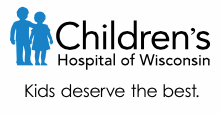Genetic Basis of Hemangiomas
| Status: | Terminated |
|---|---|
| Conditions: | Women's Studies, Hematology |
| Therapuetic Areas: | Hematology, Reproductive |
| Healthy: | No |
| Age Range: | Any |
| Updated: | 8/30/2017 |
| Start Date: | April 2007 |
| End Date: | May 2016 |
The purpose of this study is to determine if there are genes that are common in children with
infantile hemangioma. This information will allow physicians to improve care for patients who
have been diagnosed with this disease and to provide their parents with more complete
information regarding the cause of this disease. This research is being done because many
unanswered questions remain regarding children with infantile hemangioma. There are very few
medications to treat infants with hemangiomas.
infantile hemangioma. This information will allow physicians to improve care for patients who
have been diagnosed with this disease and to provide their parents with more complete
information regarding the cause of this disease. This research is being done because many
unanswered questions remain regarding children with infantile hemangioma. There are very few
medications to treat infants with hemangiomas.
WHAT IS INVOLVED IN THE RESEARCH STUDY?
- Buccal smear (cheek cells) or small blood sample (4 mL or 1 teaspoon) from child being
seen in the Dermatology clinic having infantile hemangioma or vascular anomaly
- Buccal smear (cheek cells) or small blood sample (4 mL or 1 teaspoon) from parents of
child
If you and your child agree to be in this study, the following will happen:
1. Informed consent and permission to use or disclose your/your child's health information
for research purposes will be obtained by Dr. Drolet, the principal investigator, or her
research team. You will receive a copy of this consent form.
2. A buccal swab or blood sample will be obtained from you and your child; buccal sampling
involves rubbing the inside of your cheek and removing cells to perform a genetic test
called "Genomewide Association (GWA).
We expect you and your child to be involved in this study until you and your child have the
genetic testing performed.
- Buccal smear (cheek cells) or small blood sample (4 mL or 1 teaspoon) from child being
seen in the Dermatology clinic having infantile hemangioma or vascular anomaly
- Buccal smear (cheek cells) or small blood sample (4 mL or 1 teaspoon) from parents of
child
If you and your child agree to be in this study, the following will happen:
1. Informed consent and permission to use or disclose your/your child's health information
for research purposes will be obtained by Dr. Drolet, the principal investigator, or her
research team. You will receive a copy of this consent form.
2. A buccal swab or blood sample will be obtained from you and your child; buccal sampling
involves rubbing the inside of your cheek and removing cells to perform a genetic test
called "Genomewide Association (GWA).
We expect you and your child to be involved in this study until you and your child have the
genetic testing performed.
Study Population Inclusion Criteria:
- No limit to age
- Diagnosis of infantile hemangioma and/or vascular anomaly
- Unaffected twin sibling
- Each patient's authorized legal guardian must understand the nature of the study and
must provide written informed consent. Each patient must also give assent to study
participation.
Study Population Exclusion Criteria:
- Diagnosis other than infantile hemangioma or vascular anomaly
- If the lesion has resolved and cannot be confirmed as a hemangioma by clinical exam
- If the biologic parents are unwilling or unable to submit DNA samples the child will
be excluded from the DNA study. Therefore, if DNA samples cannot be or are not
obtained from both biologic parents, the child and family will be excluded from the
study.
We found this trial at
1
site
9000 W Wisconsin Ave #270
Milwaukee, Wisconsin 53226
Milwaukee, Wisconsin 53226
(414) 266-2000

Children's Hospital of Wisconsin Nothing matters more than our children. At Children's Hospital of Wisconsin,...
Click here to add this to my saved trials